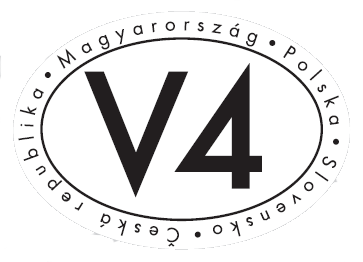Project Publications
| Book 1 | Book 2 | Book 3 | Book 4 | Book 5 | Book 6 | conference articles in journals |
Szopik-Depczyńska, K., Świadek, A., & Tomaszewski, M. (2014). Pressure from Consumers as a Determinant of Innovative Activity of Enterprises from Countries of the Visegrad Group (chapter 6) In: A.S. Gubik & K. Wach K. (Eds.), International Entrepreneurship and Corporate Growth in Visegrad Countries. Miskolc: University of Miskolc (ISBN: 978-3-200-03673-4).
Full text: pdf (free download)
Abstract
Among Visegrad countries the dominating innovations have a demand nature. Strong or very strong pressure from customers (who purchase goods), to introduce new products or to reduce production costs stimulates innovative activity of the surveyed companies. This study illustrates the impact of demand on innovation activity of enterprises of the Visegrad Group. Research was carried out on a large group of enterprises (1,349) in the four Visegrad countries, which is rather rare because of the difficulty in obtaining research material. The aim of this article is to show how variation in the intensity of the pressure from customers to introduce new products and to reduce production costs affects the individual attributes of innovation activity in enterprises of the Visegrad Group. It was found that without strong or very strong pressure from customers, the company will not commence innovative activity.
Keywords: innovative activity, pressure from customers, Visegrad countries
JEL classification: O31, O32
References
Acemoglu D. & Linn J. (2004). Market size in innovation: theory and evidence from the pharmaceutical industry. Quarterly Journal of Economics, 119(3), 1049-1090.
Adner R, & Levinthal D. (2001). Demand heterogeneity and technological evolution: implications for productand process innovation. Management Science, 47(5), 626.
Baran M., Ostrowska A. & Pander W. (2012). Innowacje popytowe, czyli jak się tworzy współczesne innowacje, Warszawa: PARP.
Chesbrough H. W. (2003). Open Innovation: The New Imperative for Creating and Profiting from Technology, Boston, MA: Harvard Business School Press.
Chesbrough H. W. (2006). Open Business Models: How to Thrive in the New Innovation Landscape. Boston, MA: Harvard Business School Press.
Chesbrough H. W., Appleyard M. M. (2007). Open innovation and strategy. California Management Review, 50(1), 57-76.
Chesbrough H. & Crowther A. K. (2006). Beyond high tech: early adopters of open innovation in other industries. R&D Management, 36(3), 229-236.
Dosi G. (1982). Technological paradigms and technological trajectories. Research Policy 11(3), 160- 161.
Elofson G. & Robinson W.N. (2007). Collective customer collaboration impacts on supply-chain performance. International Journal of Production Research, 45(11), 2592-2593.
Fabrizio K. R & Thomas L. G. (2011). The impact of local demand on innovation in a global industry, Strategic Management Journal, 33(1), 42-64.
Franke N. & Piller F. (2004). Value creation by toolkits for user innovation and design: the case of the watch market. Journal of Product Innovation Management, 21(6), 401-415.
Franke N., von Hippel E. & Schreier M. (2006). Finding commercially attractive user innovations: a test of leaduser theory. Journal of Product Innovation Management, 23(4), 301-315.
Fuller J., Jawecki G. & Muhlbacher H. (2007). Innovation creation by online basketball communities. Journal of Business Research, 60(1), 60-71.
Griliches Z. (1995). R&D and productivity: econometric results and measurement issues, In Stoneman P. (ed.) Handbook of the Economics of Innovation and Technological Change. Oxford, UK: Blackwell.
Hienerth C. (2006). The commercialization of user innovations: the development of the rodeo kayak industry. R&D Management, 36(3), p. 273-294.
Janasz W. & Kozioł K. (2007). Determinanty działalności innowacyjnej przedsiębiorstw, PWE, Warszawa, p. 24.
Jeppesen L. B. & Molin M. J. (2003). Consumers as co-developers: learning and innovation outside the firm. Technology Analysis and Strategic Management, 15(3), 363-383.
Nelson R. R. (1982). The role of knowledge in R&D efficiency, Quarterly Journal of Economics, 97(3), 468-469.
Lettl C., Herstatt C. & Gemuenden H.G. (2006). Users’ contributions to radical innovation: evidence from four cases in the field of medical equipment technology. R&D Management, 36(3), 251- 272.
Lichtenthaler U. (2008). Open innovation in practice: an analysis of strategic approaches to technology transactions. IEEE Transactions of Engineering Management, Vol. 55(1), 148 - 157.
Lichtenthaler U. (2011). Open innovation: past research, current debates, and future directions. Academy of Management Perspectives, 25(1), 75-93.
Newell R. G, Jaffe A. B. & Stavins R. N. (1999). The induced innovation hypothesis and energy-saving technological change. Quarterly Journal of Economics, 114 (3), 941-975.
Popp D. (2002). Induced innovation and energy prices, American Economic Review, 92 (1), 160-180. Prahalad C. K. & Ramaswamy V. (2000). Co-opting customer competence. Harvard Business Review, 78(1), 79-87.
Prandelli E., Verona G. &, Raccagni D. (2006). Diffusion of web-based product innovation. California Management Review, 8 (4), 109-36.
Schmookler J. (1966). Invention and Economic Growth Development. Cambridge, MA: Harvard University Press.
Seybold P. B. (2006). Outside Innovation: How Your Customers Will Co-Design Your Company’s Future, New York: Harper Collins.
Skaggs B.C. & Youndt M. (2004). Strategic positioning, human capital, and performance in service organizations: a customer interaction approach. Strategic Management Journal, 25(1), 85-99.
von Hippel E. (1988). The Sources of Innovation, Oxford: Oxford University Press.
Czech Republic
Hungary
Poland
Slovakia

Contact:
Dr hab. Krzysztof Wach
Cracow University of Economics
wachk@uek.krakow.pl
www.wach.uek.krakow.pl

